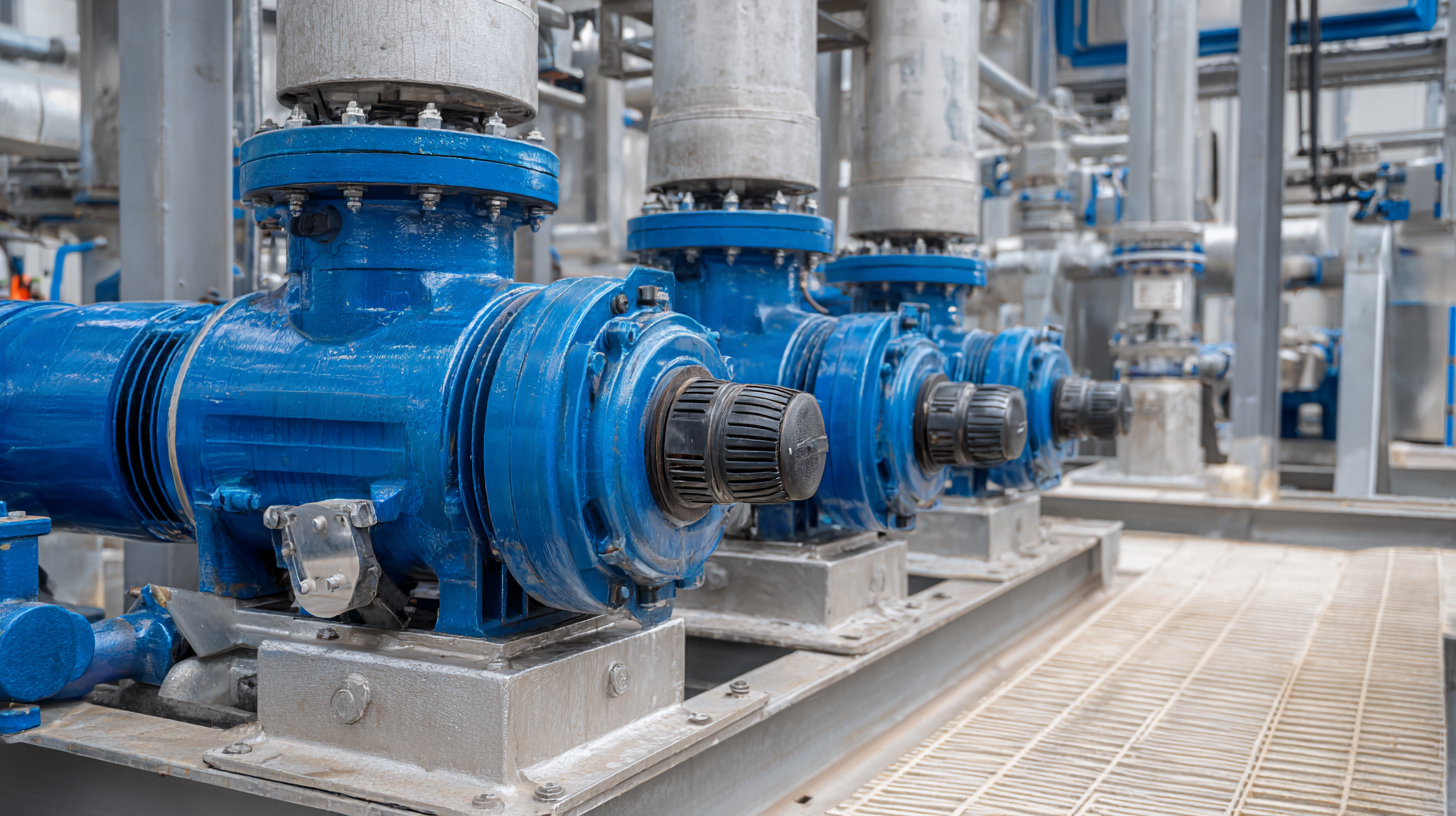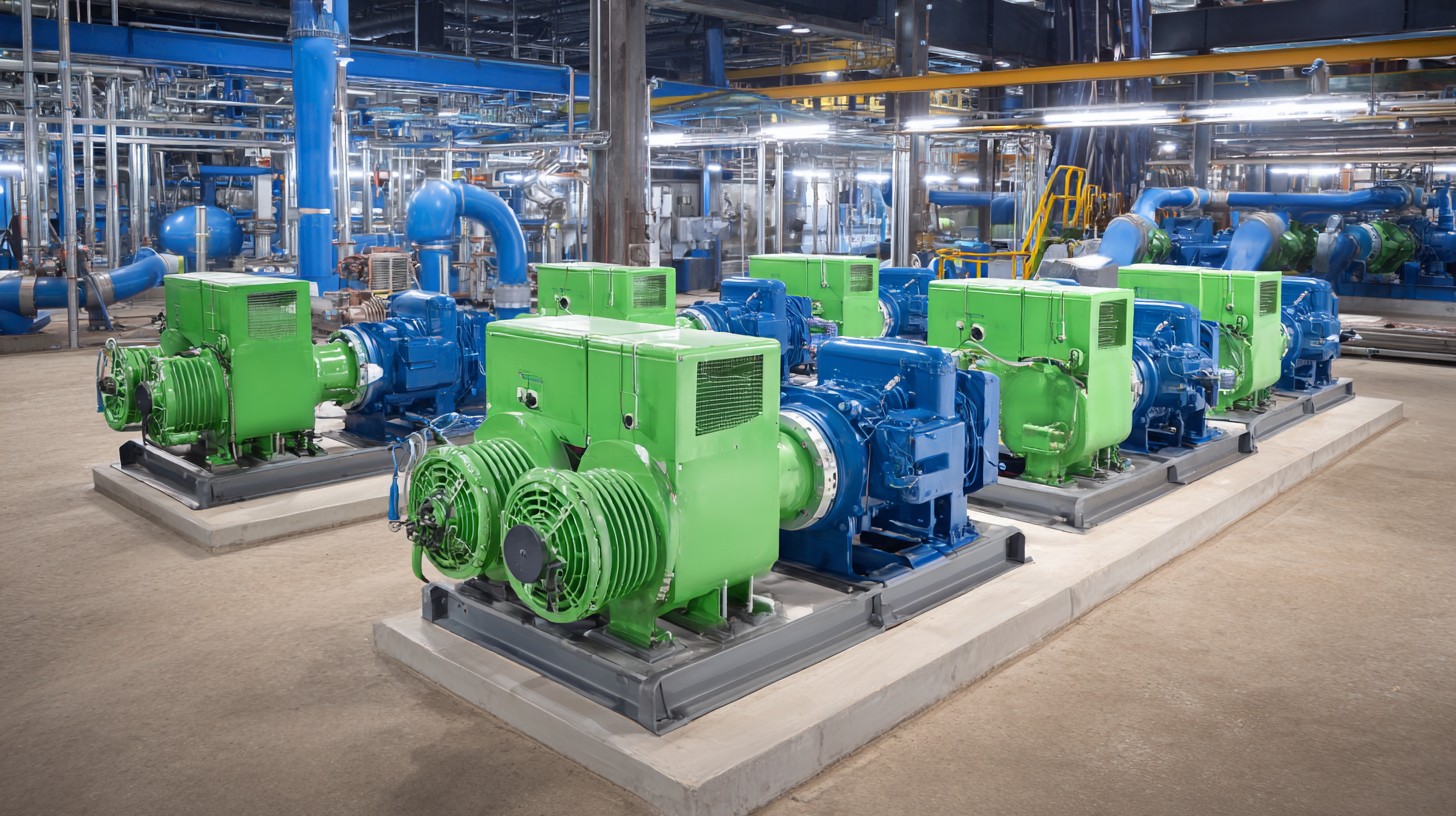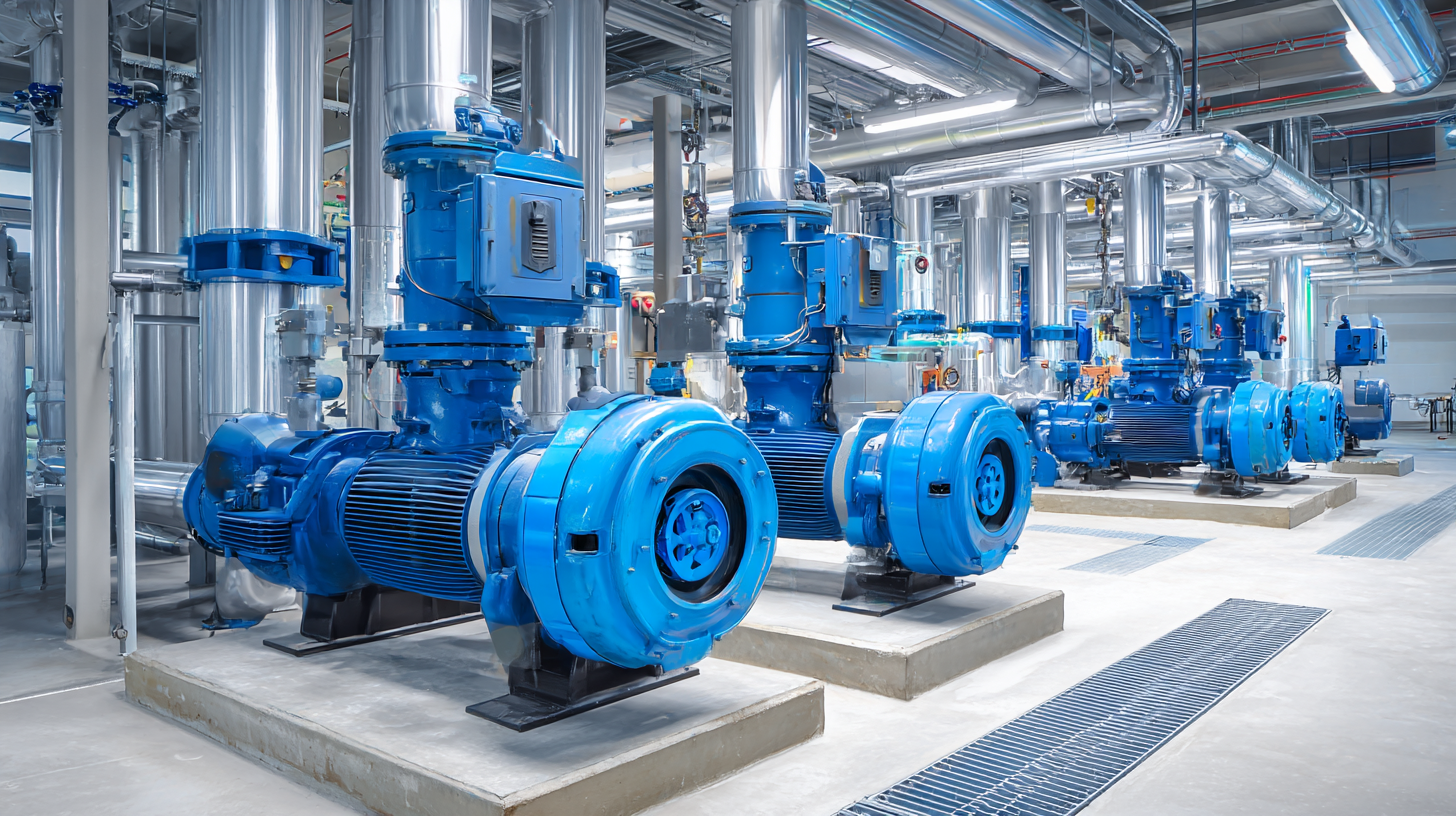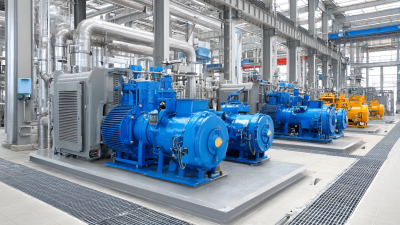
Universal Pumping | High Pressure Pumps
High Pressure Pumps for Difficult to Pump Slurry, Sludge, and Food Waste.
In the ever-evolving industrial landscape, selecting the appropriate pump systems for your business needs is critical to operational efficiency and cost-effectiveness. According to a report by the Global Pump Market, the industry is projected to grow at a
CAGR of 4.5% from 2021 to 2026, driven by increasing demands in sectors such as water treatment and chemical processing. With diverse applications ranging from agriculture to manufacturing, understanding the intricacies of
pump systems becomes paramount.
 Additionally, the right choice can enhance productivity and reduce energy consumption, as inefficient systems can account for up to 20-30% in operational costs. As organizations strive for sustainability and efficiency, this
ultimate guide will provide you with essential tips and strategies to help you navigate the selection process and make informed decisions that align with your business objectives.
Additionally, the right choice can enhance productivity and reduce energy consumption, as inefficient systems can account for up to 20-30% in operational costs. As organizations strive for sustainability and efficiency, this
ultimate guide will provide you with essential tips and strategies to help you navigate the selection process and make informed decisions that align with your business objectives.
When selecting the right pump systems for your business needs, understanding the various types available is crucial. Pump systems are generally categorized into positive displacement pumps and centrifugal pumps, each serving distinct operational purposes.
Positive displacement pumps, which move fluids by trapping a fixed amount of liquid and forcing it into a discharge pipe, are ideal for high-viscosity fluids and applications requiring precise flow rates. According to a report by Grand View Research, the global positive displacement pumps market is projected to reach $4.63 billion by 2026, indicating a growing demand in industries such as oil and gas and food processing.
On the other hand, centrifugal pumps, which utilize rotational energy to move fluids, are widely used for applications involving lower-viscosity liquids. Their efficiency in transferring large volumes of fluid quickly makes them a popular choice in water supply and wastewater treatment sectors. As per a recent analysis from Allied Market Research, the centrifugal pump market is expected to grow at a CAGR of 4.5% from 2020 to 2027, driven by increased investments in infrastructure development and industrial projects. By understanding the unique benefits and applications of these pump types, businesses can make informed decisions that align with their specific operational needs.
When selecting pump systems for your business, it's essential to consider several key factors that directly impact efficiency and operational success. First and foremost, assess the specific requirements of your application. Different industries have unique needs, whether you’re dealing with water, chemicals, or slurries. Understanding the fluid properties, flow rates, and temperature ranges will help you choose the right pump type, such as centrifugal, diaphragm, or gear pumps.

Another crucial aspect is the total cost of ownership, which goes beyond just the purchase price. Evaluate energy consumption, maintenance requirements, and potential downtime costs. A pump system that might be cheaper upfront could lead to higher operational expenses over time if it’s not energy-efficient or requires frequent repairs. Additionally, ensure that the pump system is suited for your infrastructure, considering space limitations and integration with existing systems. Balancing these factors will lead you to the ideal pump solution that enhances productivity and reliability in your operations.
When it comes to operational efficiency, the impact of efficient pump systems cannot be underestimated. According to a recent industry report by the Hydraulic Institute, optimizing pump systems can lead to energy savings of up to 30%. These savings are not merely financial; they translate into a decreased environmental footprint. In competitive markets, leveraging modern, efficient pump technology not only reduces energy costs but also enhances overall productivity, thereby giving businesses an edge.
Tip: Regular maintenance of pump systems is essential. A well-maintained pump can operate at peak efficiency, preventing energy wastage and minimizing downtime. Aim for a maintenance schedule that includes inspections and replacement of worn components to ensure your systems work optimally.
Another compelling statistic from the U.S. Department of Energy indicates that nearly 20% of a facility's energy consumption comes from unoptimized pump systems. By upgrading to high-efficiency pumps, businesses can expect substantial cost savings while ensuring reliable water and fluid delivery. Furthermore, implementing smart monitoring technology can provide real-time data, allowing for prompt adjustments and preventative measures.
Tip: Invest in real-time monitoring solutions for your pump systems. This can help identify inefficiencies and allow for immediate corrective action, thereby maximizing your operational performance.
 When it comes to ensuring the efficiency and
longevity of your pump systems,
regular maintenance is crucial. Start by establishing a routine inspection schedule
to check for signs of wear and tear. Pay close attention to seals,
bearings, and impellers, as these components are often the
first to show signs of fatigue. Keeping the pump's exterior clean also aids in identifying
any leaks or damages early on. Creating a log of maintenance activities
can help track performance trends and highlight potential problems before they escalate.
When it comes to ensuring the efficiency and
longevity of your pump systems,
regular maintenance is crucial. Start by establishing a routine inspection schedule
to check for signs of wear and tear. Pay close attention to seals,
bearings, and impellers, as these components are often the
first to show signs of fatigue. Keeping the pump's exterior clean also aids in identifying
any leaks or damages early on. Creating a log of maintenance activities
can help track performance trends and highlight potential problems before they escalate.
Additionally, environmental factors can significantly impact the lifespan of your pump systems. Assess the conditions under which your pumps operate, such as temperature extremes, humidity, and the presence of corrosive substances. Implementing protective measures, such as using corrosion-resistant materials or integrating filters, can enhance durability. Ensure that operators are trained to recognize operational anomalies, as this can be vital in maintaining optimal performance and preventing unnecessary downtime. Regularly updating your training practices and maintenance protocols will not only maximize efficiency but also extend the overall life of your equipment.
Emerging technologies in pump systems are transforming the landscape of industrial operations, ensuring efficiency and sustainability for businesses. One key trend is the integration of IoT (Internet of Things) capabilities, enabling real-time monitoring and data collection. This connected technology allows businesses to track pump performance, detect issues before they become critical, and optimize maintenance schedules. With predictive analytics, companies can now assess the longevity of their equipment, ultimately reducing downtime and lowering operational costs.
Another significant development is the advancement in materials and design, which enhances energy efficiency and reduces environmental impact. Innovations like smart pumps, which adjust their performance based on demand, play a crucial role in minimizing energy consumption. Additionally, the use of advanced materials can lead to longer-lasting pumps that require less frequent replacements. As industries seek to meet stricter environmental standards, these technologies not only contribute to sustainability goals but also improve overall performance, making them vital considerations for businesses looking to invest in future-proof pump systems.
| Pump Type | Efficiency (%) | Operating Range (GPM) | Applications | Emerging Technologies |
|---|---|---|---|---|
| Centrifugal Pump | 80-90 | 10-500 | Water Supply, Fire Protection | Smart Sensors, IoT Integration |
| Positive Displacement Pump | 75-85 | 5-150 | Chemical Processing, Food Industry | Variable Speed Drives, Advanced Controls |
| Submersible Pump | 85-95 | 20-400 | Drainage, Sewage Systems | Automated Monitoring, Remote Operation |
| Diaphragm Pump | 70-80 | 1-100 | Pharmaceuticals, Waste Treatment | Smart Diagnostics, Predictive Maintenance |
| Gear Pump | 75-90 | 3-60 | Hydraulic Fluids, Oil Transfer | Energy Recovery, AI-Based Monitoring |






Universal Pumping
625 Apache Trail
Woodstock, GA 30189
Mon - Fri | 9:00 AM - 5:00 PM
Universal Pumping is staffed with industry professionals with 20-45 years experience with high pressure pumping systems. We represent only the “elite producers” in pump manufacturing: Britain’s EMS and Germany’s EMMERICH. Our engineering and manufacturing approach is conservative, and we do not use “guess work” in the design or sales of our pumping and filtration equipment.



